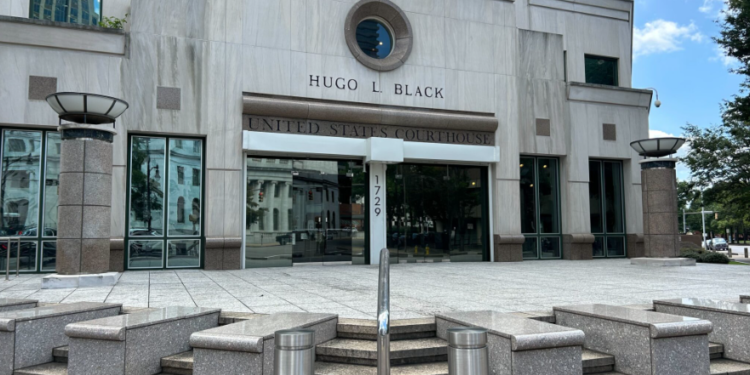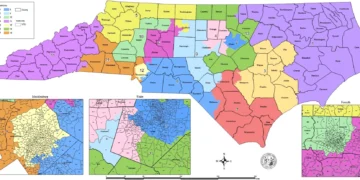September 29, 2025 Story by: Editor
Alabama Gov. Kay Ivey announced Friday that she will not convene a special legislative session to redraw the state Senate map, despite a recent federal court ruling that found portions of the existing map—particularly in the Montgomery area—violate the Voting Rights Act.
The governor’s refusal underscores a broader legal and constitutional tension: how to reconcile race‑based remedial redistricting under the VRA with constitutional protections against racial classification.
“As the law currently stands, states like Alabama are put to the virtually impossible task of protecting some voters based on race without discriminating against any other voters based on race,” Ivey said in her statement. “I remain hopeful that we will somehow find the ‘magic map’ that will both satisfy the federal court and also be fair to all Alabamians. But as of today, I cannot justify the time and expense of calling a special session.”
Her refusal sets up a likely clash with the courts, which may now have to step in to fashion a remedial map if the Legislature fails to act.
Allen appealed Manasco’s ruling, citing the Supreme Court’s expected ruling in Callais v. Louisiana, which challenges the constitutionality of majority-minority district. Ivey also mentioned the case in her statement.
“In the meantime, I call on the U.S. Supreme Court to clarify the law in this area as soon as possible and relieve states like Alabama from this no-win situation,” the statement from Ivey said.
Her declaration comes after a federal judge issued a ruling in August finding that the current Senate maps around Montgomery dilute Black voting strength and fail to satisfy Section 2 of the VRA.
A federal judge ruled that Alabama’s current state Senate district map violates Section 2 of the Voting Rights Act of 1965, which prohibits voting laws that discriminate based on race. The ruling prohibits the use of the current map in the 2026 elections and requires lawmakers to create an additional majority-Black or near-majority-Black Senate district in the Montgomery region.
In a 261-page opinion in a lawsuit brought against the state by the Alabama State Conference of the NAACP, U.S. District Judge Anna Manasco, appointed by President Donald Trump, stated that to remedy the violation, the Alabama Legislature must create a new Senate district in the Montgomery area.
U.S. District Judge Manasco ruled that Alabama’s state Senate map violates the Voting Rights Act of 1965 (VRA) by unlawfully diminishing the voting strength of Black Alabamians. The ruling prohibits the use of the current map in the 2026 elections and requires lawmakers to create an additional majority-Black or near-majority-Black Senate district in the Montgomery region.
If state legislators fail to act, the court made clear that it will impose its own remedial plan.
Background
In a unanimous decision Thursday, August 7, a panel of three district court judges in the Northern District of Alabama issued an injunction to keep in place a congressional map that includes two Black-majority districts through the end of the decade.
The map—crafted by a court-appointed special master—must remain in effect until the next regularly scheduled redistricting in 2030. The court will also retain jurisdiction over the case until the injunction expires.
The panel’s ruling effectively nullifies Alabama’s 2023 congressional map, which had defied earlier court directives by preserving only one Black-majority district despite evidence that a second could be drawn in compliance with the Voting Rights Act (VRA). In their order, the judges underscored that the 2023 map was a clear violation of federal law and prior judicial instructions.
The case was originally brought in November 2021 on behalf of Evan Milligan, Khadidah Stone, Letetia Jackson, Shalela Dowdy, Greater Birmingham Ministries, and the Alabama State Conference of the NAACP who are represented by the American Civil Liberties Union, ACLU of Alabama, Legal Defense Fund, and Wiggins, Childs, Pantazis, Fisher & Goldfarb.
In 2022, a three-judge federal court struck down Alabama’s 2021 map, ruling that it violated Section 2 of the Voting Rights Act by diluting Black voting power.
The court noted that Black Alabamians make up about 27% of the state’s population but under the old plan held only one of seven U.S. House seats (roughly 14% of representation). With voting patterns sharply polarized by race in Alabama, the court concluded that Black voters could not elect their preferred candidates in a second district under the 2021 plan.
The court ordered the state to draw a map with two districts in which Black voters would have a realistic opportunity to elect their chosen candidates.The U.S. Supreme Court upheld that ruling.
In Allen v. Milligan, 599 U.S. (2023), the Court agreed that plaintiffs were likely to prevail on their Section 2 claim against Alabama’s 2021 map. The Court’s 5-4 decision effectively mandated creation of a second majority-Black district.
In response, the Alabama legislature approved a new map in 2023 with one majority-Black district and a second district that was roughly 40% Black. The federal panel, however, still found that map intentionally discriminated against Black voters for failing to produce two Black-opportunity districts as required by law.
When Alabama’s legislature responded with a map that still contained only one such district, the federal court intervened and tasked a special master with producing a compliant map. That remedial map was used in the most recent election cycle and resulted in the election of Representative Shomari Figures, a Democrat, giving Alabama two Black-majority districts for the first time in modern history.
Sources: Alabama Reflector / Alabama Public Radio / AP News / NAACP LDF / Reuters

















